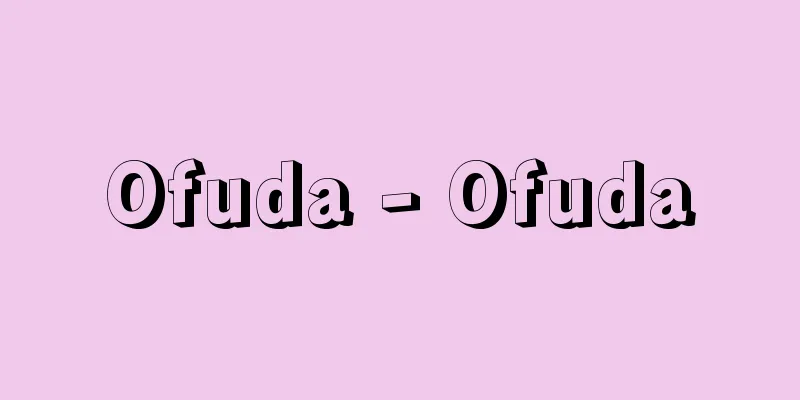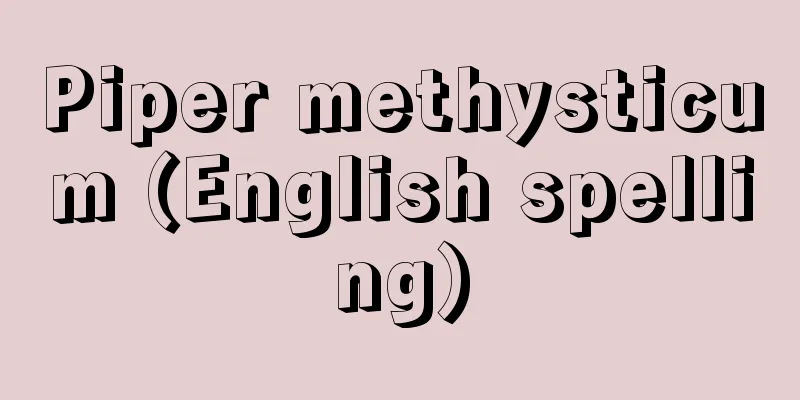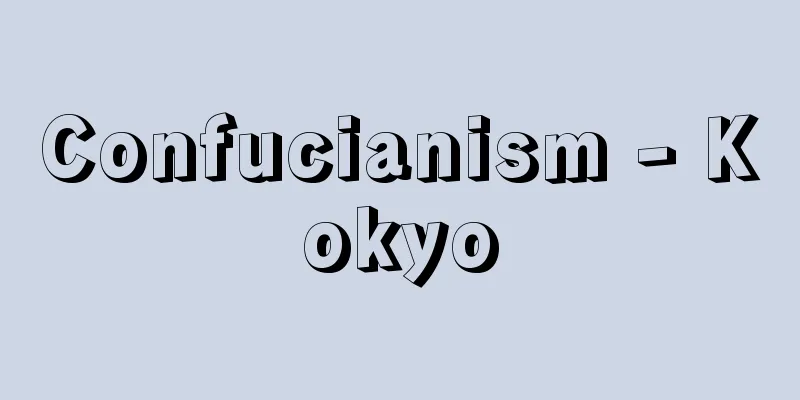Sharebon - Sharebon

|
A type of novel form that became popular after the mid-Edo period. Many of them were based on interviews at pleasure quarters, and described in detail in dialogue-based prose the customs of the pleasure quarters and the manners and behavior of the pleasure guests and prostitutes, with a simple novel-like structure. Some also took the form of pleasure quarter guidebooks, guides for pleasure guests, or treatises on entertainment. The writing style was called kobon, a small booklet folded into quarters of half-sized paper, and usually had 30 to 40 pages, but later on, slightly larger chuhon became more common. Depending on the content, they were also called suisho (elegant writing) or tsusho (common writing), and were sometimes written as sharebon (humorous writing). It first began around 1730 (in the latter half of the Kyoho era) when people with a background in Chinese studies composed humorous prose in the classical Chinese style, modelled on Chinese pleasure-land literature. These works aimed to be humorous by associating various pleasure-land phenomena with classics and historical events. Eventually, however, a trend arose in which works pursued the aesthetic ideal of life known as "tsuu" that was prevalent mainly in pleasure-land society, and humorously depicted the ludicrous side of the half-informed and unsophisticated who could not reach the level of a connoisseur, whilst also attempting to provide readers with knowledge and inner workings of the unique pleasure-land society, which they called "ugachi." In 1770 (Meiwa 7), works such as "Yuushi Hougen" (The Old Man Tada) and "Tatsumi no Sono" (The Garden of Tatsumi) established a style of novels using realistic techniques with Yoshiwara and Fukagawa as the subjects. While the likes of Hōrai Sanjinkikyō and Manzōtei each displayed their own humorous style, it was Santoukōden who perfected sharebon as literature for the connoisseurs with such masterpieces as “Tsūgen Somagakyō” (1787) and “Keiseikaishi Jūhatté” (1790). The suppression of the reform politics of 1791 (Kansei 3) caused a temporary decline in sharebon, but around 1800 (the end of the Kansei era and the beginning of the Kyowa era), Umeborikokuga, Shikitei Sanba, Jippensha Ikku and others began to produce many works that broke away from the traditional notion of a connoisseur and put more emphasis on human feelings than on ugachi, and eventually there was a trend towards longer works with sequels and sequels, leading to a shift to ninjobon (human interest stories) around 1830 (the end of the Bunsei era and the beginning of the Tenpo era). On the other hand, realistic techniques centered on dialogue, along with the independence of comedy, were used by Sanba and Ikku and were largely inherited in the field of kokkeibon (humor stories). [Minoru Mizuno] "The World of Yellow-Byoshi Sharebon by Mizuno Minoru (1976, Iwanami Shinsho)" ▽ "The Series of Japanese Classical Literature 59: Collection of Yellow-Byoshi Sharebon (1958, Iwanami Shoten) annotated by the same author" ▽ "The Complete Works of Japanese Classical Literature 47: Sharebon, Humorous Books, and Human Interest Books, annotated by Nakano Mitsutoshi et al. (1971, Shogakukan)" ▽ "The Complete Sharebon Series, 29 volumes, with 1 supplementary volume, edited by Mizuno Minoru, Nakamura Yukihiko, Jinbo Goya et al. (1978-88, Chuokoron-Shinsha)" Painting of the Shandong Chicken Propagation by Santo Kyoden, published in 1787 (Tenmei 7), held at the National Diet Library "Tsūgen Sohri" Source: Shogakukan Encyclopedia Nipponica About Encyclopedia Nipponica Information | Legend |
|
江戸中期以後行われた小説形態の一種。遊里に取材し、遊里の習俗、遊客遊女の風俗言動などを、会話を主とした文章で精細に描き、簡単な小説的構成をとったものが多い。また遊里案内や遊客心得、遊興論などの形をとるものもある。書型は半紙四つ折りの小本(こぼん)とよばれる大きさで、紙数30、40枚までの小冊が普通であるが、のちにはやや大形の中本(ちゅうほん)も多くなる。その内容から粋書(すいしょ)・通書(つうしょ)などともよばれ、滑稽本(しゃれぼん)と書かれることもある。最初は1730年ごろ(享保(きょうほう)の後半)漢学の素養のある人々が、中国の遊里文学に倣って漢文体の戯文をつくったことに始まり、遊里の諸事象を古典・故事に付会するおかしさをねらった作品などが出たが、やがて遊里社会を中心として行き渡った「通(つう)」という美的生活理念を追求して、通に至りえない半可通(はんかつう)や野暮(やぼ)の滑稽(こっけい)ぶりをおもしろおかしく描く一方、特殊な遊里社会の知識や内情を「うがち」と称して読者に提供しようとする風潮を生じた。1770年(明和7)の『遊子方言(ゆうしほうげん)』(多田爺(ただのじじい))、『辰巳之園(たつみのその)』(夢中散人寝言先生(むちゅうさんじんねごとせんせい))などによって、吉原・深川を対象とする写実技法による小説の型ができあがり、山手馬鹿人(やまのてのばかひと)(大田南畝(なんぽ))、蓬莱山人帰橋(ほうらいさんじんききょう)、万象亭(まんぞうてい)などが、滑稽とうがちにそれぞれ特色をみせたが、山東京伝(さんとうきょうでん)に至って、『通言総籬(つうげんそうまがき)』(1787)、『傾城買四十八手(けいせいかいしじゅうはって)』(1790)などの傑作によって洒落本は通の文学としての完成をみせた。 1791年(寛政3)の改革政治による弾圧で、洒落本は一時衰えたが、1800年前後(寛政(かんせい)末・享和(きょうわ)初め)ごろ、梅暮里谷峨(うめぼりこくが)、式亭三馬(しきていさんば)、十返舎一九(じっぺんしゃいっく)らによって、従来の通の意識を脱却した、うがちよりも人情を前面に押し出す主情的な作風が多く出され、やがて後編・続編と続く長編化の傾向をも生じて、1830年ごろ(文政(ぶんせい)末・天保(てんぽう)初め)には人情本(にんじょうぼん)に移行した。一方、会話を主とする写実技法は、笑いの独立とともに、三馬や一九に活用されて、滑稽本(こっけいぼん)の領域に大きく受け継がれた。 [水野 稔] 『水野稔著『黄表紙洒落本の世界』(1976・岩波新書)』▽『同校注『日本古典文学大系59 黄表紙洒落本集』(1958・岩波書店)』▽『中野三敏他校注『日本古典文学全集47 洒落本・滑稽本・人情本』(1971・小学館)』▽『水野稔・中村幸彦・神保五彌他編『洒落本大成』全29巻・補巻1(1978~88・中央公論社)』 山東京伝作 山東鶏告画 1787年(天明7)刊国立国会図書館所蔵"> 『通言総籬』 出典 小学館 日本大百科全書(ニッポニカ)日本大百科全書(ニッポニカ)について 情報 | 凡例 |
Recommend
Shinwa [town] - Shinwa
A former town in Amakusa County, eastern Amakusa S...
Nikaya (English spelling)
…Afterwards, as the Buddhist order was establishe...
Anisakis simplex (English name) Anisakissimplex
…In intestinal anisakiasis, the lesions are often...
Emotion - Jou
〘noun〙① The emotional response that arises from so...
Abdominal pain - Abdominal pain
Pain originating from the abdomen is a very commo...
Before the Emperor - Gozenzata
In the Muromachi Shogunate, a council was held wit...
Celebration of joy - Kinojinoiwai
A celebration of the 77th birthday. A celebration ...
Uranium reconversion process - Uranium reconversion process
…Uranium enrichment [Fuel molding and processing]...
Dry lubrication
…Most oil pumps use a forced oil supply system, w...
Tosti, Francesco Paolo
Born: April 9, 1846 in Ortona sul Mare Died Decemb...
Collection lawsuit - toritatesosho
In a compulsory execution procedure for a monetary...
Sixth National Diet Congress - Rokuzenkyo
Abbreviation for the 6th National Conference of th...
Gonium
…They grow in rice fields, ponds, lakes, and othe...
Mount Shiramine - Shiraminesan
A mountain in the eastern part of Sakaide City, Ka...
Hawkins (Hawkyns), Sir John
Born: 1532. Plymouth [Died] November 12, 1595. Bri...









